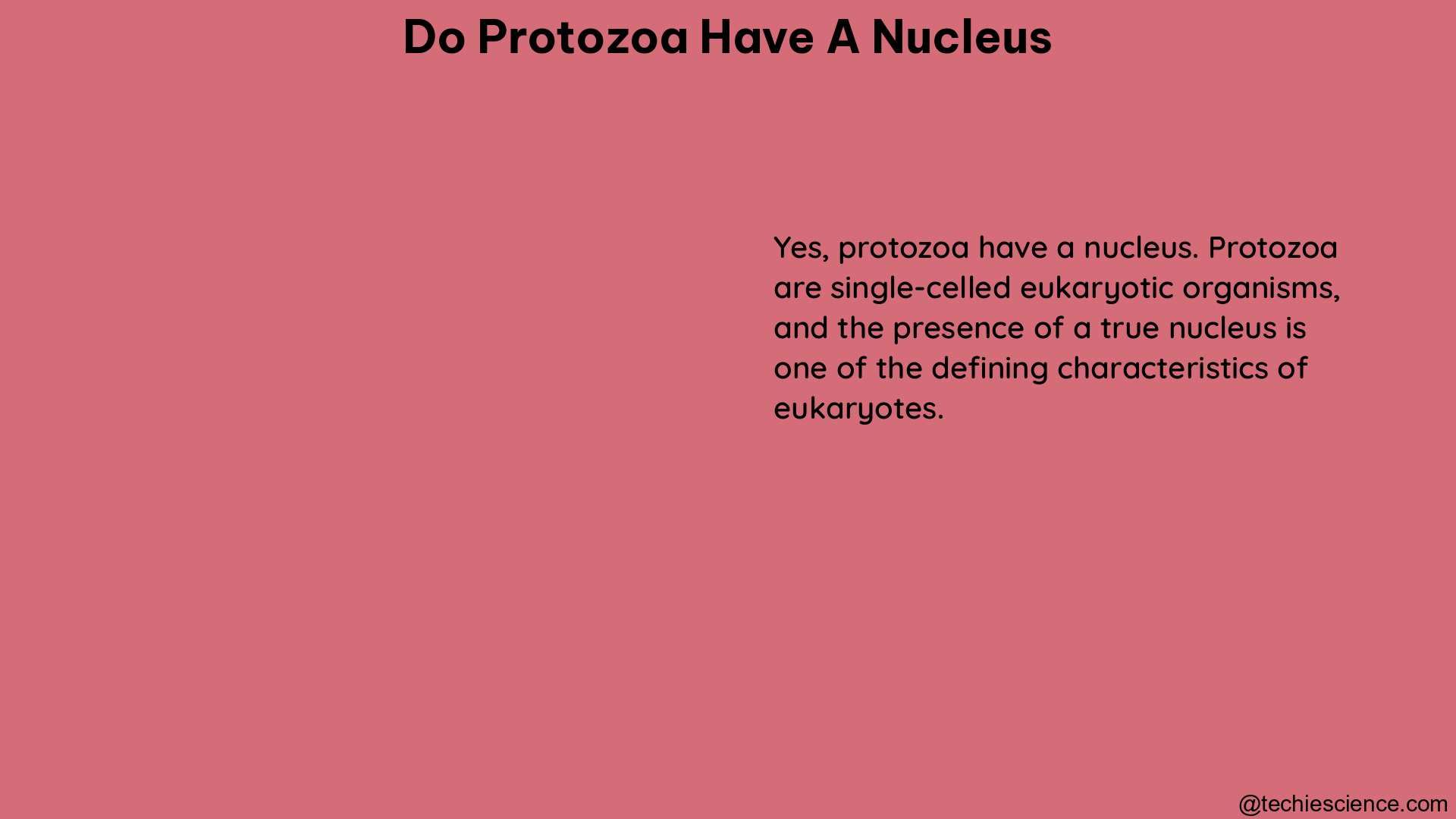Protozoa, the single-celled eukaryotic organisms, are known to possess a well-defined nucleus, which is a characteristic feature of eukaryotic cells. This article delves into the intricate details of the nuclei found in protozoa, providing a comprehensive understanding of their structure, function, and diversity.
The Presence of Nuclei in Protozoa
Protozoa are classified as eukaryotes, which means they possess a membrane-bound nucleus that contains the genetic material. This is a fundamental distinction between eukaryotes and prokaryotes, the latter of which lack a true nucleus. The presence of a nucleus in protozoa is a well-established fact, supported by extensive scientific literature.
Nucleus Structure in Protozoa
The nucleus in protozoa is typically spherical or oval in shape and is surrounded by a double-layered nuclear envelope. This envelope is perforated by nuclear pores, which allow the exchange of materials between the nucleus and the cytoplasm. Within the nucleus, the genetic material is organized into chromosomes, which are composed of DNA and associated proteins.
Diversity of Nuclei in Protozoa
While all protozoa possess a nucleus, the number and structure of nuclei can vary among different species and even within the same species. Some protozoa, such as the ciliates, have two distinct types of nuclei:
- Micronucleus: The micronucleus is the germline nucleus, containing the diploid set of chromosomes. It is responsible for sexual reproduction and the maintenance of the genetic information.
- Macronucleus: The macronucleus is the somatic nucleus, which is responsible for the vegetative functions of the cell. It contains a large number of DNA copies, often many times the diploid amount, and divides amitotically (without mitosis).
Other protozoa, such as the amoebas and flagellates, may have a single nucleus or multiple nuclei within the same cell.
Nucleus Size and Copy Number in Protozoa
The size and number of nuclei in protozoa can vary significantly, depending on the species and the specific function of the cell. For example, in the case of rumen protozoa, it has been observed that larger species, such as Epidinium or Polyplastron, tend to have more 18S rRNA gene copies encoded in their genome compared to smaller species, such as Entodinium spp.
This difference in the number of rRNA gene copies is directly related to the size and complexity of the macronucleus in these protozoa. The macronucleus, which is responsible for the majority of the cell’s RNA production, can have a significantly higher DNA content than the diploid amount, allowing for increased transcriptional activity and metabolic capacity.
Implications of Nucleus Diversity in Protozoa
The diversity in the number and structure of nuclei found in protozoa has important implications for their function and behavior. For instance, the presence of a micronucleus and a macronucleus in ciliates allows for the separation of germline and somatic functions, enabling these organisms to undergo complex life cycles and reproductive strategies.
Furthermore, the variation in the size and copy number of nuclei can affect the representation of different protozoan species in molecular techniques, such as pyrosequencing. This is particularly relevant in the study of rumen protozoa, where the size and number of nuclei can influence their detection and quantification using these methods.
Protozoan Nuclei and Their Functional Significance

The nucleus in protozoa plays a crucial role in the overall functioning and survival of these single-celled organisms. Let’s explore the key functions of the nucleus in protozoa:
Genetic Information Storage and Replication
The nucleus is the repository of the genetic information in protozoa, containing the DNA that encodes the instructions for the cell’s structure and function. This genetic material is replicated during cell division, ensuring the faithful transmission of genetic information to the daughter cells.
RNA Synthesis and Gene Expression
The nucleus is the site of transcription, where the genetic information stored in the DNA is converted into RNA molecules. These RNA molecules are then transported out of the nucleus and used as templates for protein synthesis, allowing the cell to carry out its various metabolic and functional activities.
Cell Division and Reproduction
The nucleus plays a crucial role in the cell division process, known as mitosis or meiosis, depending on the type of division. During mitosis, the replicated genetic material is equally distributed to the daughter cells, ensuring the maintenance of the species. In some protozoa, such as ciliates, the micronucleus and macronucleus work together to facilitate sexual reproduction and the exchange of genetic material.
Regulation of Cellular Processes
The nucleus acts as the control center of the cell, regulating various cellular processes, such as metabolism, growth, and response to environmental stimuli. The genetic information stored in the nucleus is responsible for the expression of genes, which in turn, determines the cell’s structure, function, and behavior.
Protozoan Nuclei and Molecular Techniques
The diversity in the number and structure of nuclei found in protozoa has important implications for their study using molecular techniques. Understanding these characteristics is crucial for the accurate identification, quantification, and analysis of protozoan communities.
Nuclei and Pyrosequencing
In the case of rumen protozoa, the size and number of nuclei can affect their representation in pyrosequencing approaches. Larger protozoa, such as Epidinium or Polyplastron, tend to have more 18S rRNA gene copies encoded in their genome compared to smaller protozoa, such as Entodinium spp. This difference in gene copy number can lead to a bias in the detection and quantification of these species using pyrosequencing techniques.
Nuclei and Molecular Quantification
The variation in the size and number of nuclei in protozoa can also impact their ability to be accurately quantified using molecular techniques, such as quantitative PCR (qPCR) or fluorescence in situ hybridization (FISH). The number of target gene copies per cell can influence the accuracy of these methods, and researchers must consider the nuclear characteristics of the protozoa under study to ensure reliable quantification.
Conclusion
In summary, protozoa are eukaryotic organisms that possess a well-defined nucleus, which is a fundamental characteristic of their cellular organization. The nuclei in protozoa exhibit a remarkable diversity in terms of their structure, number, and size, with important implications for their function and behavior. Understanding the characteristics of protozoan nuclei is crucial for the accurate study and analysis of these single-celled organisms using various molecular techniques.
Reference:
- Sylvester, J. T. (2012). Protozoa. In Encyclopedia of Dairy Sciences (Second Edition) (pp. 667-673). Academic Press.
- Hackstein, J. H. (2010). (Endo) symbiotic Methanogenic Archaea. Springer Science & Business Media.
- Newbold, C. J., de la Fuente, G., Belanche, A., Ramos-Morales, E., & McEwan, N. R. (2015). The role of ciliate protozoa in the rumen. Frontiers in microbiology, 6, 1313.
- Kittelmann, S., Devente, S. R., Kirk, M. R., Seedorf, H., Dehority, B. A., & Janssen, P. H. (2015). Phylogeny of intestinal ciliates, including Charonina ventriculi, and comparison of microscopy and 18S rRNA gene pyrosequencing for rumen ciliate community structure analysis. Applied and environmental microbiology, 81(7), 2433-2444.

Hello, I am Piyali Das, pursuing my Post Graduation in Zoology from Calcutta University. I am very passionate on Academic Article writing. My aim is to explain complex things in simple way through my writings for the readers.